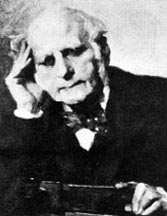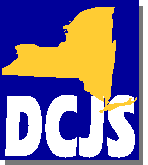The Fingerprint System
. . . Bertillon's method of identification contained significant room for improvement. Although 243 basic categories were plenty for an agency handling 5,000 to 10,000 records, when the 50,000 mark was reached and passed, New York's Bertillon Indexers found themselves searching though categories containing 200 or more cards. The time required to check for duplicate records increased from a few minutes to several hours.
Another problem was the inaccuracy of the measurements themselves, due to the inexperience or incompetence of the examiners, as well as the criminals' refusal to wait until they attained full adulthood before they began committing crimes.

The contract between Sir Herschel and
Rajyadhar Konai in Konai's handwriting.
|
By the turn of the century, supplementing Bertillon's original system with additional anthropometric sub-classifications was common practice, and it was for the purpose of studying these enhancements that Chief Clerk Charles K. Baker was once again called upon to travel to Europe.
Baker made this trip in the summer of 1902 with Dr. R. B. Lamb, Superintendent of Dannemora State Hospital. They studied for three days under Bertillon at his "School for Detectives" in Paris, then, upon hearing that fingerprints had superseded the Bertillon method in Great Britain, set out for England.
Konai's hand print was
impressed on the back
of the contract. Bengal,
India, July 28, 1858.

|
The English had begun using fingerprints in July of 1858, when Sir William Herschel, Chief Magistrate of the Hooghly district in Jungipoor, India, reached his limit of frustration with the dishonesty of the local natives. On a whim, and with no thought toward personal identification, Herschel had Rajyadhar Konai, a local businessman, impress his hand print on the back of a contract.
The idea was merely ". . . to frighten [him] out of all thought of repudiating his signature." The native was suitably impressed, and Herschel made a habit of requiring palm prints--and later, simply the prints of the right Index and Middle fingers--on every contract made with the locals. Personal contact with the document, they believed, made the contract more binding than if they simply signed it. Thus, the first wide-scale, modern-day use of fingerprints was predicated, not upon scientific evidence, but upon superstitious beliefs. . .
During the 1870's, Dr. Henry Faulds, the British Surgeon-Superintendent of Tsukiji Hospital in Tokyo, Japan, took up the study of "skin-furrows" after noticing finger marks on specimens of "prehistoric" pottery. A learned and industrious man, Dr. Faulds not only recognized the importance of fingerprints as a means of identification, but devised a method of classification as well.
In 1880, Faulds forwarded an explanation of his classification system and a sample of the forms he had designed for recording inked impressions, to Sir Charles Darwin. Darwin, in advanced age and ill health, informed Dr. Faulds that he could be of no assistance to him, but promised to pass the materials on to his cousin, Francis Galton.

Sir Francis Galton perfected
a rudimentary fingerprint
classification system in 1895. |
. . . Galton's primary interest in fingerprints was as an aid in determining heredity and racial background. While he soon discovered that fingerprints offered no firm clues to an individual's intelligence or genetic history, he was able to scientifically prove what Herschel and Faulds already suspected: that fingerprints do not change over the course of an individual's lifetime, and that no two fingerprints are exactly the same. According to his calculations, the odds of two individual fingerprints being the same were 1 in 64 billion.
Galton designed a form for recording inked fingerprint impressions and defined three main pattern types:
- Loops, those patterns which tend to curve back upon themselves;
- Whorls, those patterns which tend to be circular;
- Arches, those patters which form no loops or circles.
Each of the ten fingers, depending on its pattern type, was labeled with an L, W, or A. The letters representing the patterns in the right
hand's index, middle and ring fingers were grouped together, followed by the letters representing the patterns in the corresponding fingers of the left hand. These letters were then followed by the letters representing the patterns in the right thumb and little finger and the left thumb and little finger.
A person with the fingerprint patterns Loop, Loop, Arch, Whorl, Loop
in the right hand and Whorl, Loop, Whorl, Loop, Loop in the left hand
would, under this system, have a classification of LAWLWLLLWL. This
series of letters was recorded on the fingerprint form and the forms
were filed alphabetically by classification.
Galton's abecedarian filing system was remarkably similar to the one Dr. Faulds had devised and, if Faulds is to be believed, the form Galton designed to record impressions on was a blatant copy of Faulds' form forwarded to Galton from Darwin in 1880.
In 1894, after having rejected Dr. Faulds' suggestion to use fingerprints, Scotland Yard adopted Galton's rudimentary fingerprint system as an auxiliary to their Bertillon files.

Sir Edward Richard Henry
authored the Henry System
of Fingerprint Classification. |
At this time, in British India, Edward Henry, the new administrator of the Bengal District, was experiencing the same problems with the local population as Sir Herschel had.
Henry was convinced that a system of identification based solely on fingerprints was possible. A correspondence, and subsequent friendship, was begun with Sir Galton, and in 1894, when he returned to England on leave, Henry visited Galton at his laboratory.
After returning to India, Henry had fingerprints and Bertillon measurements taken of all prisoners under his jurisdiction. In a report dated June 24, 1896, Henry outlined the advantages of a fingerprint-based system over Bertillonage, but admitted that such a system had not yet been worked out.
A major obstacle which needed to be overcome was the formulation of a simple and logical method of dividing fingerprint records into a large number of primary groupings. . .
Henry's classification system assigned a value to each individual finger. Fingers number 1 and 2, being the right thumb and right index, held a value of 16. Fingers number 3 and 4, the right middle and ring, held a value of 8, and so on.
Whenever a whorl pattern appeared in a finger, the corresponding value was added to the base value of 1. Henry used a fraction-type primary classification which took the accrued values of the even numbered fingers as the numerator and the accrued value of the odd numbered fingers as the denominator.
Therefore, a person with the fingerprint patterns Loop, Loop, Arch, Whorl, Loop in the right hand and Whorl, Loop, Whorl, Loop, Loop in the left hand would have a primary fingerprint classification of 15 over 1. A person with no whorl patterns would have a primary classification of 1 over
1.
This classification system, allowing for 1,024 primary groupings was instituted in Bengal, India, in early 1897. The success of Henry's experiment encouraged him to make a formal request to the Government of India for the appointment of an independent committee to review his new system and compare it with Bertillonage.
The committee met in March of 1897 and submitted a report to the Government of India which concluded that the fingerprint method was far superior to the Bertillon System. On June 12, 1897, the Governor General signed a resolution directing that identification of criminals by fingerprint impressions was to be adopted in British India.
Henry's Fingerprint Classification System was so successful in India that a second committee was assembled to review Scotland Yard's identification practices. This committee, in 1900, recommended the total abandonment of Bertillon's anthropometric system in favor of the new Henry
System.
In May of 1901, Henry was appointed Assistant Commissioner of the Criminal Investigation Department. He was transferred to England and began setting up Scotland Yard's Central Fingerprint Bureau and instructing selected officers in the art of fingerprint classification.
By the time Mr. Baker and Dr. Lamb visited London in 1902, Henry's fingerprint file was in full operation. They were impressed by this new system and, prior to returning to America, purchased a copy of Henry's book Classification and Uses of Fingerprints, as well as Finger Prints by Sir Frances Galton.
The information they had gathered while in Paris was put to use in upgrading the accuracy of the Prison Department's Bertillon Bureau. The books were given to James H. Parke. . .
Superintendent Collins, in his Annual report for 1903, noted the introduction of a Fingerprint Department "for the purpose of experiment and test," but predicted that the Bertillon System would continue to be the approved method of identification in the United States.
|





